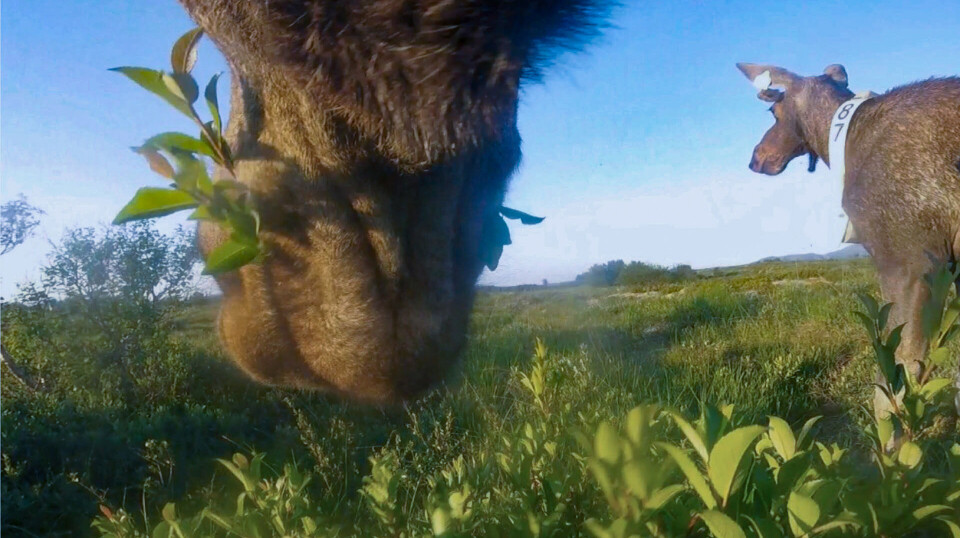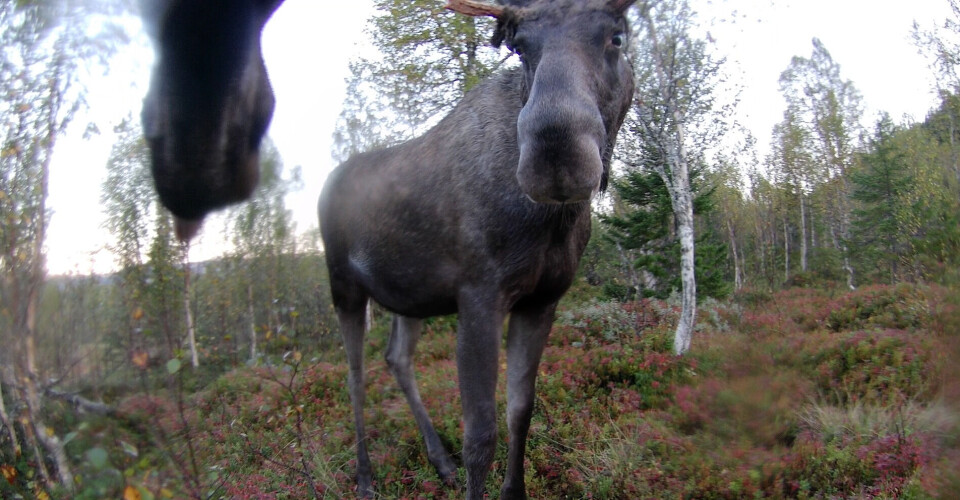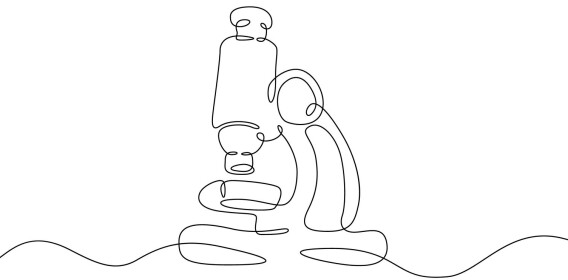Moose's own photos reveal what they're up to
Moose equipped with a camera collar provide unique insights into the animals' daily lives.

Researchers at the Norwegian Institute for Nature Research (NINA) have outfitted several moose in Norway with camera collars.
Now we can see what the moose do and eat, based on their own photos.
Three bull moose filmed themselves on the island of Vega for five days in July 2022. The video clips show what their diet consists of, minute by minute.
A fairly new approach
“Video transmitters have existed for several years, but mostly as experimental technology. It’s only in recent years that we’ve started using them on a larger scale,” says Christer Moe Rolandsen, a senior research scientist at NINA.
Since 2017, over 20 moose have collected video clips using camera collars. This allows researchers to see what the moose do throughout the day and at different times of the year.
“We’re seeing that this method provides really interesting data. Even tracking the animals and observing from a distance wouldn’t have allowed us to obtain data with this level of detail and quality,” says Rolandsen.
The researchers at NINA are already working on a new project to gather video recordings from several moose in three different regions of Norway.
The hope is that the project will provide better answers as to why moose in the south have lost weight.
Videos from the new project show moose and deer fitted with camera collars in different parts of Norway. (Video: Christer Moe Rolandsen / NINA)
Revealed their diet
The moose on Vega were fitted with camera collars that recorded footage every three minutes for five days. Afterwards, the collars were removed using an automatic release mechanism, and the data was analysed.
The researchers recorded the types of plants eaten and performed chemical analyses of the food. They collected the forage plants by following the same trails the moose had taken.
The three bull moose ate a total of 25 different plant species.
Goat willow was what they ate the most of, making up half of their diet.
Nine types of plants made up 95 per cent of their diet. These were goat willow, birch leaves and birch twigs with leaves, meadowsweet, rowan, aspen, dock, bogbean, and meadow grasses.
Sensible food choices
The study on Vega showed that moose feed on plants that match the nutritional balance found in goat willow. A similar tendency to balance proteins, fats, and carbohydrates was found in moose grazing during winter in Sweden.
“They seem to be sensible about their needs and have an inherent ability to choose plants that are good for them,” says Rolandsen.

“It was almost as if the moose adjusted their choices from meal to meal. If they ate a meal low in protein, the next time they would choose something with more protein," he says.
Lots of eating and resting
Researchers also gained an overview of what moose do throughout the day.
The moose on Vega spent around 25 per cent of the day eating.
The researchers also noted that the moose walked for 7 per cent of the day and stood still for 10 per cent.
They spent around 40 per cent of the day ruminating and used 20 per cent of their time sleeping or resting. Other activities – such as drinking, grooming, and being social – took up about 1 per cent of their day.
“There’s a lot of eating and resting. In that sense, it might seem like a rather boring life. They eat, chew their cud, and relax,” says Rolandsen.
Occasionally, researchers observe rarer behaviours, such as moose running from something, eating faeces, licking salt licks, or trying out plants that are not usually part of their regular diet.
Other moose caught on camera
In several of the videos, the moose have captured footage of other nearby moose, which provides insight into their social life.
It seems the moose on Vega might be a little more social than what is typical.
“There were several bulls that moved together and filmed each other,” says Rolandsen.
Moose are the least social of the deer species found in Norway.
“They aren’t that dependent on socialising with others, except for cows that stay with their calves. In winter, they're more often seen in larger groups,” he says.
That’s likely because the harsh conditions force them to use a smaller part of the landscape compared to summer. In deep snow, it helps to follow in each other’s tracks.
The video recordings may also help us better understand how often moose actually meet and spend time together.
Increased competition for food between moose and deer?
In the new project, researchers have placed cameras on several moose in three regions.
One is in the border areas between Vestfold, Telemark, and Buskerud counties. The second is in Trøndelag county, and the third in Troms county.
The researchers have also fitted deer with cameras in the two southernmost areas.
“Especially in parts of southern Norway, the deer population has grown significantly. It’s now becoming the most numerous species in several municipalities that, just a few years ago, were dominated by moose,” says Rolandsen.
Many are now wondering why – and how intense the food competition between moose and deer is becoming.
It may be that deer are better at taking advantage of warmer summers and shorter winters.
“Part of the research focus is also related to grazing damage in the forests and how different types of forestry affect the food supply for moose and deer," he says.

Lots of birch and blueberries
For now, it seems that the moose in the three new areas have a slightly different diet compared to those on Vega.
It varies quite a bit from one moose to another, but the most common food sources are birch and blueberry shrubs, says Rolandsen.
Goat willow and dwarf willow came in third.
Other plants that are fairly common in their diet include rowan, some herbs, juniper, pine, large ferns, raspberry, fireweed, aquatic plants, and lichen that hangs from spruce trees.
Most viewed
“The availability of forage plants and the diet of individual moose differ between the three areas, but we need to collect more data before we can say more about it,” he says.
Why have moose in the south been losing weight?
One of the key questions the researchers hope to answer is why moose in the south are losing weight and are in poorer condition than those in the north.
The three areas where moose have been fitted with camera collars represent populations in good, moderate, and poor health.
Researchers already know a few things. Warm temperatures in June negatively impact moose and are linked to lower body weight. The number of moose competing for food in an area also plays a role.
Why a warm spring and summer, especially the month of June, are so harmful is still unclear.
It might lead to lower food quality. It’s also possible that moose experience more heat stress or more parasites. The animals may become sluggish or use energy to cool down, which can lead to eating less.
Another way to monitor moose
The camera collars record 30-second video clips several times a day throughout the year.
The moose wearing cameras are also equipped with activity trackers. The goal is to link this data with the video footage.
“What we see the moose doing in the videos can be used to calibrate the activity data we collect throughout the day,” says Rolandsen, adding:
“If we understand the connection between the two well enough, we can translate the activity data into things like feeding, resting time, and so on, and use that as a basis for finding answers."
Reference:
Spitzer et al. Camera collars reveal macronutrient balancing in free-ranging male moose during summer, Ecology and Evolution, vol. 14, 2024. DOI: 10.1002/ece3.70192
———
Translated by Ingrid P. Nuse
Read the Norwegian version of this article on forskning.no
Related content:

Subscribe to our newsletter
The latest news from Science Norway, sent twice a week and completely free.






































